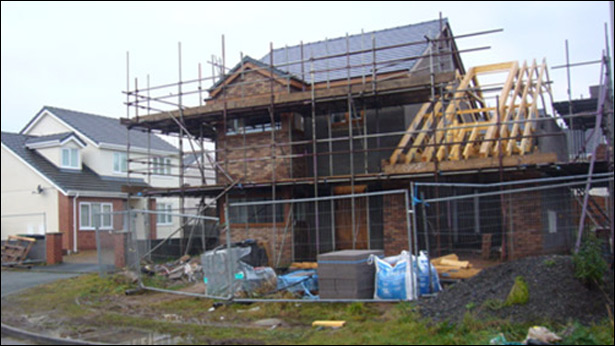
27 December 2012
An innovative funding scheme that allows people on modest incomes to initially ‘acquire’ a building plot at no cost has been trialed in Wales.
Nineteen plots have been made available in Anglesey thanks to the scheme, which is supported by the local county council and a rural housing association.
{TEASER}
Once the self builders have completed their homes they then have to get a mortgage on their properties – and pay back the cost of the plot. But by helping families get over the initial financial hurdle of funding a building plot the project has shown how public sector bodies can help deliver affordable homes for local people.
The project was originally launched in 2005, before the credit crunch. In the early days the self builders could buy a plot for a quarter of the normal value – typically this worked out at £16,500. The council ‘held’ a legal charge on the other 75% of the value of the plot, and if the self builder ever moved on and sold their home they would have to pay back the 75% of the land value to the council.
The plots are only available to people who have lived locally for at least five years, and they were carefully allocated by the housing association to those that would benefit the most. Mary Stillitoe, from the Rural Housing Enabler said: “There was an initial high demand for the scheme and the first nine plots were sold within the first 12 months. However, the credit crunch of 2007 caused considerable problems because the scheme combined self build with affordable housing conditions. Effectively, none of the banks would lend on the scheme unless the property was built to roof level”.
Because of the new economic climate the County Council set up its own a loan scheme to enable self builders to fund construction to roof level – at which point a lender would then offer them a mortgage.
The council also amended the scheme to a legal charge based on a 20% market value discount on the whole property, should the house be sold in the future. This ‘discount’ helped the self builders meet the lenders’ deposit requirement.
The impact of all this financial creativity was that the self builder’s money for the initial cost of the plot could now be used to fund the construction work with the council’s loan available, if required, to reach the level of build specified by the mortgage lender. At that stage, the self builder would draw down the mortgage to pay for the plot, repay any loan and finish the build.
All 19 plots have now been sold, and most of the homes have been built. To ensure the whole project looks consistent the council employed a local architect,Russell-Hughes,to come up with a ‘pattern book’ range of different sized homes. The self builders select one of these, but can then tweak the design and layout to suit their specific needs. The architects also help manage the work once the self builder gets on site.
In addition to the cost of the plot all of the self builders are required to pay £3,000 towards the cost of architectural services, planning and building control and administrative costs.
MsStillitoe says she is hopeful that more land will be allocated in the future. “The housing market and economic climate have changed since this scheme was launched and no doubt any future schemes will be different, and other options such as land trusts and co-operatives will need to be considered. However, there is no doubt that given the right circumstances, including land and financing, self-build is a good option for rural communities,” she said.



